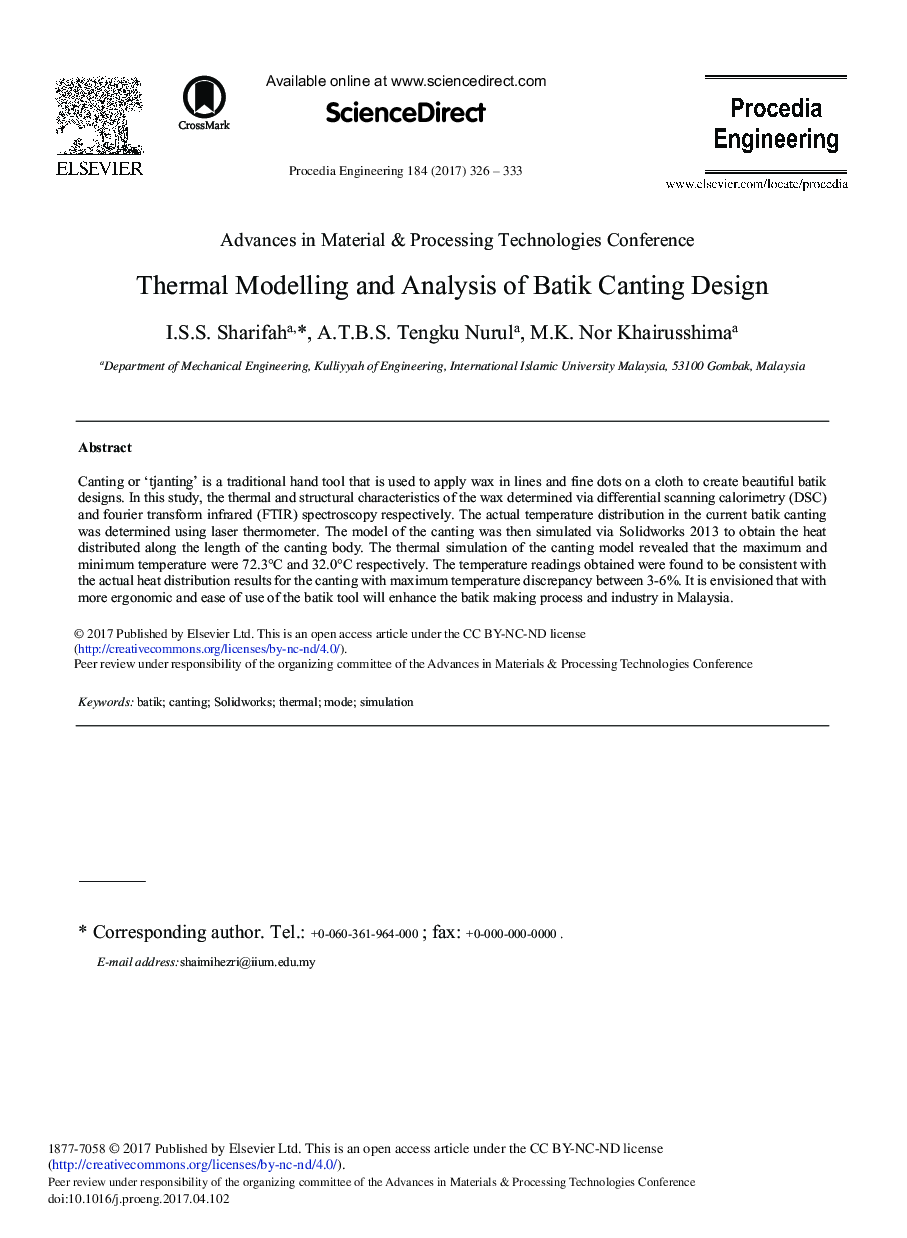| Article ID | Journal | Published Year | Pages | File Type |
|---|---|---|---|---|
| 5029139 | Procedia Engineering | 2017 | 8 Pages |
Canting or 'tjanting' is a traditional hand tool that is used to apply wax in lines and fine dots on a cloth to create beautiful batik designs. In this study, the thermal and structural characteristics of the wax determined via differential scanning calorimetry (DSC) and fourier transform infrared (FTIR) spectroscopy respectively. The actual temperature distribution in the current batik canting was determined using laser thermometer. The model of the canting was then simulated via Solidworks 2013 to obtain the heat distributed along the length of the canting body. The thermal simulation of the canting model revealed that the maximum and minimum temperature were 72.3°C and 32.0°C respectively. The temperature readings obtained were found to be consistent with the actual heat distribution results for the canting with maximum temperature discrepancy between 3-6%. It is envisioned that with more ergonomic and ease of use of the batik tool will enhance the batik making process and industry in Malaysia.
